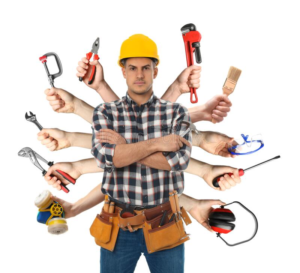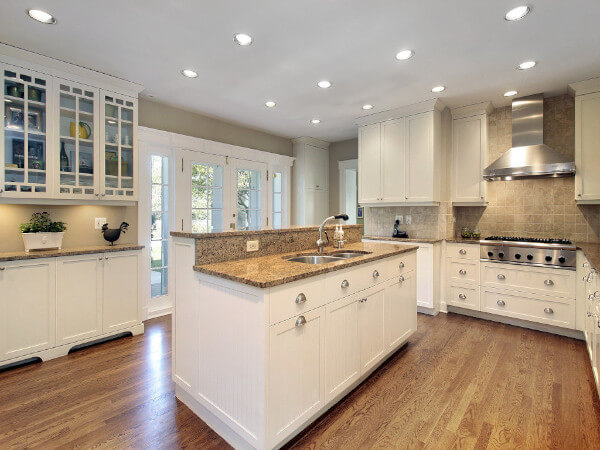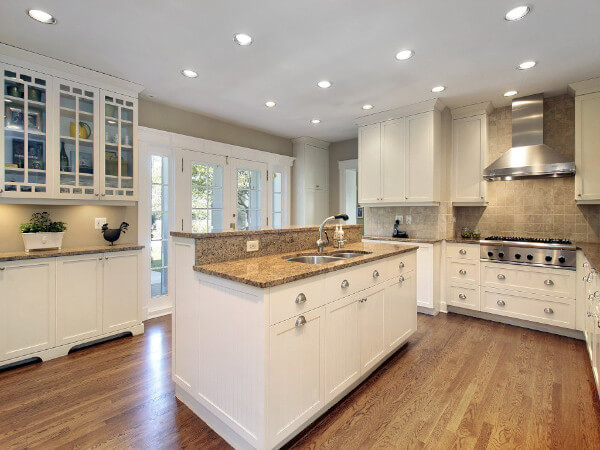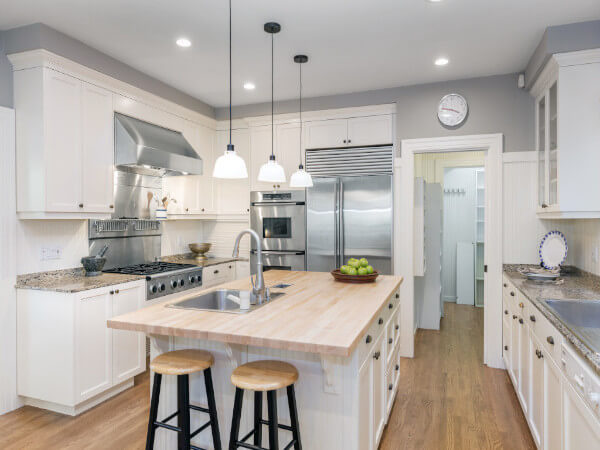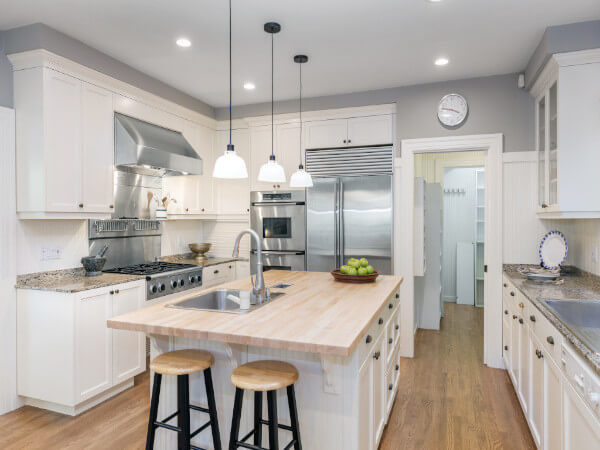Clogged drains are more than just a nuisance. They can cause foul odors in the home and lead to serious plumbing problems.
Regular drain cleaning can prevent these problems. Read on to learn about the best drain cleaners that are safe for your pipes. These natural alternatives to caustic chemical cleaners are simple and effective. Contact Drain Cleaning Perth now!

Baking soda and vinegar are not just for your science fair volcano project – they also make a great drain cleaner. The combination is inexpensive and does not contain the harmful sodium hydroxide (also known as lye) found in many store-bought clog removers. Plus, you probably already have these two common kitchen items in your home!
Whenever you have a small drain problem, like a smelly sink or an occasional clog, this is your go-to solution. Mixing baking soda with a little bit of vinegar will often be enough to clean out your drain and stop the stink. This trick is especially helpful for garbage disposals, as the high acid content in vinegar will break down a lot of soap scum and food debris.
The fizzing action of the reaction can also help to loosen up a minor clog. However, this is not a strong enough solution to tackle serious clogs or hard-to-reach grease and grime buildup. If your clog is caused by a broken pipe or something more severe, it is best to call in the professionals.
Whenever you need to clean out your drains, pour one cup of baking soda down the drain and immediately follow with two cups of white distilled vinegar. The acid in the vinegar will neutralize the alkaline in the baking soda, causing an audible reaction that can dislodge some of the stuck-on gunk. Once the fizzing has stopped, wait five minutes and then flush the drain with boiling water. This will help prevent any lingering residue from causing future problems. You can also repeat this process once a week to keep your drains and garbage disposals fresh and odor-free. For an extra dose of cleanliness, you can sprinkle a handful of baking soda around the drain and scrub it with an old toothbrush to remove any visible gunk. For best results, use this method in conjunction with regular hot water flushing to prevent clogs from developing in the first place.
You might not think of dish soap as a cleaning product but it’s actually very versatile. Whether you’re battling an oily stain on clothes, eliminating pesky fruit flies in your kitchen or trying to unclog a drain pipe, dish soap is an effective and safe option.
A few squirts of mild dish detergent mixed in with lukewarm water is an excellent solution for a sink or bathtub clog. This technique is especially helpful if the clog is caused by hair or grease as opposed to solid objects that may be stuck inside of your pipes. Just be sure to use a very small amount of detergent and never put more than one cup of water down the drain.
The Good Housekeeping Institute Cleaning Lab confirms that the high-foaming mixture of surfactants found in most dishes soaps is capable of dissolving grease and cutting through food residue without damaging different types of materials or surfaces. It also removes food stains from dishes and utensils, effectively eliminating stubborn oily messes.
Dish soap is also an excellent general household cleaner. It can be used to wipe down surfaces, including countertops, baseboards, windowsills and more, leaving them clean and fresh. Just be sure to follow the manufacturer’s recommendations for your specific material or surface.
Adding just a tablespoon of liquid detergent to hot water can help loosen and dissolve solids in your toilet. This method is particularly useful for clogged bathroom drains and toilet bowls that are blocked by hair and grime. However, this method would not be very effective in a 4 or 5 inch main sewer line since it does not work well with large quantities of debris.
Grease clogs are among the most common reasons for a backed-up kitchen or bathroom drain. Liquid dish soap, such as Dawn, can be very helpful for breaking up fats, oils and grease (FOG) that have accumulated in your drain pipes. To get started:
- Make sure your drain is completely clear of all visible obstructions.
- Mix a tablespoon of liquid dish soap with two liters of boiling water.
- Pour the mixture down your drain and allow it to sit for a few minutes before flushing with another pot of boiling water.
When it comes to home drain cleaners, there are a few key ingredients that you can use to get the job done without all of the harsh chemicals and warning labels found in store-bought cleaners. One of the best is a simple mixture of baking soda and salt. This mixture can be used to break down soap scum, grease, and other materials that may be clogging your drain.
To make this homemade drain cleaner:
- Mix together half a cup of salt and a cup of baking soda.
- Combine these ingredients in a sealable jar and shake to thoroughly combine them.
- Pour half of this mixture down your drain and follow it with a pot of boiling water.
- Allow this mixture to work for about an hour before rinsing it away with hot water.
Vinegar is another great option for drain cleaning because it contains acidity that can break down and dissolve substances clinging to the walls of your pipes. Like baking soda, vinegar can also be somewhat abrasive and can help scrub away some of the grime that has collected in your drain.
Another natural alternative to commercial drain cleaners is lemon juice. The acidity in this solution can break down and loosen soap scum and other substances that are causing your clogged drain. Adding a bit of baking soda to the mix can help to create a fizzing action that is helpful for breaking down stubborn clogs.
If you don’t have any baking soda on hand, another effective alternative is to use a mixture of borax and white vinegar. This DIY solution is ideal for clogs that are caused by oily or fatty materials because borax’s 9.5 pH level can help to break down these substances. To use this homemade drain cleaner:
- Start by mixing together a quarter cup of table salt and a quarter cup of borax powder.
- Add a cup of white vinegar to this mixture and pour it down your drain.
- Follow this with a pot of boiling water and allow it to sit for about an hour.
Although pouring boiling water down the drain can sometimes unclog a sink or tub, it’s not an ideal home remedy for severe clogs. For one, if the clog is caused by an object that is solid, such as a toy or piece of jewelry, boiling water can actually push it further down the pipe.
The high temperature of boiling water may also damage the pipes, particularly if they’re made from PVC. If you try to flush a PVC clog with boiling water, it can soften or even melt the joints. For these reasons, it’s best to only use this method for minor clogs that aren’t caused by solid objects.
Boiling water can help dislodge grease and soap scum that is causing a blockage. To try this, boil a pot of water on the stove and slowly pour it down the drain. Be sure to wear rubber gloves, as the hot water will be very steamy. You may have to repeat this several times to fully clear the clog.
Another way to use boiling water is to combine it with baking soda and vinegar:
- Pour a cup of baking soda into the drain.
- Pour a cup of boiling water down the drain. This will cause a fizzing reaction, which can help to break up and dissolve clogs.
- Pour a cup of boiling water down each drain to flush the system.
While a plunger isn’t as effective as baking soda and vinegar for clearing most drains, it can be a useful tool to have on hand for cleaning a clogged sink or tub. A plunger is also useful for dislodging hair and other solid debris that can clog drains.
To prevent clogs, regularly flush your drains with a combination of boiling water and liquid grease-fighting dish soap. This can help keep greasy buildup from blocking your drains and disposal. Also, be sure to clean your drains with baking soda and vinegar on a regular basis. The best time to do this is after each use of your sink or tub. Also, consider using a strainer basket to catch food particles and other items that can block your drain.
